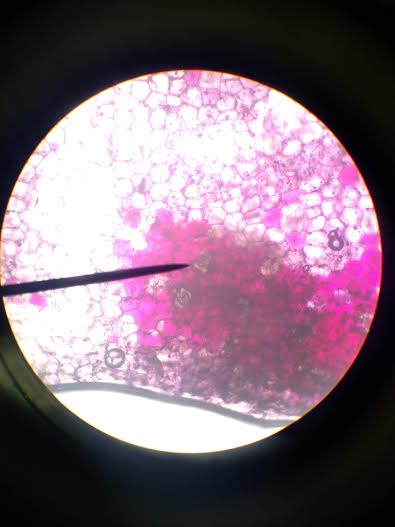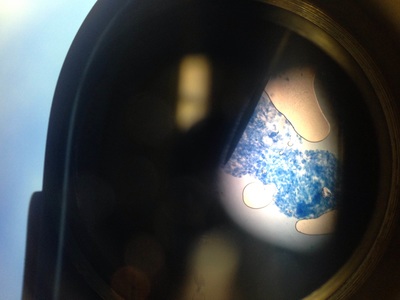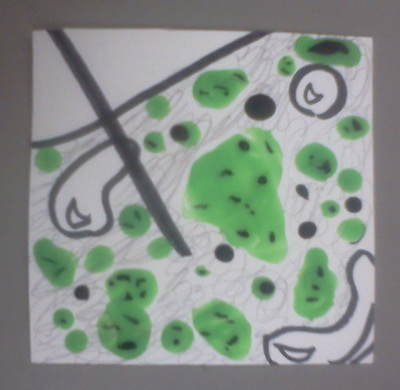|
Valerie Metzler's Inquiry of applied science learning |
microscopy lab:
comparison of plant cells
Student work is displayed above. Left: Cells from the leaf of a Wandering Jew plant; Center: Cells from an onion bulb; Right: Multimedia model of a spinach leaf cell.

In this microscopy lab, students were encouraged to compare and contrast different types of plant cells. Through this lesson, students improved their microscopy skills, acquired the skill of creating wet mount slides, and learned more about the structure and function of different types of cells.
Throughout the lab, most students were engaged in the exploration of the cells. Students took photographs, had their bodies turned in toward their group and the microscope, and wrote detailed observations of these cells in Venn Diagrams. These behavioral responses positively support the theory that hands-on learning opportunities increase the motivation and the amount of time that students are on task.
John Dewey supported educational practices like this activity when he said, "Education is not a preparation for life; education is life itself" (1938). Part of the goal of this lesson was to train students to develop their microscopy and skills of comparing and contrasting. As Dewey (1897) proposed, this type of exercise, "train[ed] him that he will have the full and ready use of all his capacity; that his eye and ear and hand may be tools ready to command, that his judgment may be capable of grasping the conditions under which it has to work" (78).
Throughout the lab, most students were engaged in the exploration of the cells. Students took photographs, had their bodies turned in toward their group and the microscope, and wrote detailed observations of these cells in Venn Diagrams. These behavioral responses positively support the theory that hands-on learning opportunities increase the motivation and the amount of time that students are on task.
John Dewey supported educational practices like this activity when he said, "Education is not a preparation for life; education is life itself" (1938). Part of the goal of this lesson was to train students to develop their microscopy and skills of comparing and contrasting. As Dewey (1897) proposed, this type of exercise, "train[ed] him that he will have the full and ready use of all his capacity; that his eye and ear and hand may be tools ready to command, that his judgment may be capable of grasping the conditions under which it has to work" (78).
Below is the lesson plan, blank lab hand-out, and several of the students' pictures from the day.
Your browser does not support viewing this document. Click here to download the document.



